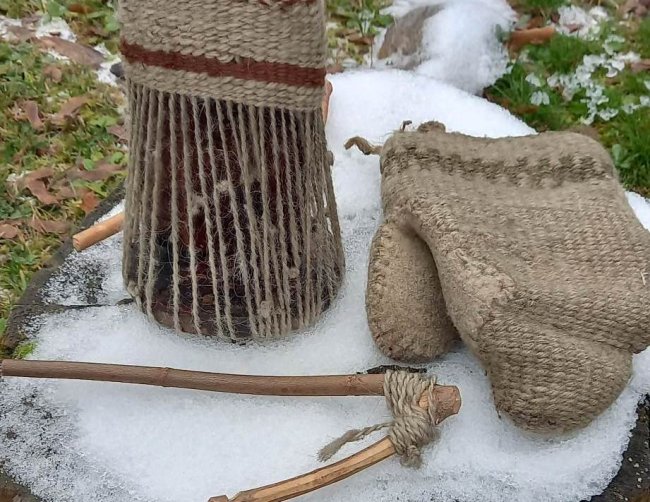Object
Carriage gloves
Information
Copyright classification
https://pl.wikipedia.org/wiki/Domena_publiczna
Description
This type of gloves existed throughout the highland region. On frosty winter days, men wore them to work in the forest (carrying wood), when going to the market, or during winter work on the farm. Hence their name - "carrier's", due to the fact that they were most often worn by carters - coachmen.
Gloves were usually made at home, for one's own needs, using a special wooden loom - a mold for weaving them. The loom in our museum consists of a board cut to the size of a hand, rounded at the top, with cuts on the edges. The board is mounted on an oval base with pins stuck along the edge. The warp was wound up through the cuts in a circular motion from the bottom (around the pins) upwards, most often from a thicker woolen thread. Then, starting from the top, the warp was interwoven with the weft using a wooden needle. After the weaving was completed, a glove finger made on a smaller form was sewn into the hole left earlier. The finished product was turned with the shreds inwards, which made the gloves more or less shaggy inside.
Similarly to the presented object, hand-spun white and black (brown) wool was usually used to make gloves, sometimes adding yarns of other colors in the weft (in the case of the glove from the exhibition, wool naturally dyed green was used).
The skill of weaving gloves among the local highlanders has almost completely disappeared. Currently, the production of wooden forms is being reactivated among the Black Highlanders of the Poprad region (From Piwniczna to Łomnica and Wierchomla). "The Weaving of Carriage Gloves by the Black Highlanders" was inscribed on the UNESCO National List of Intangible Cultural Heritage in October 2022.

